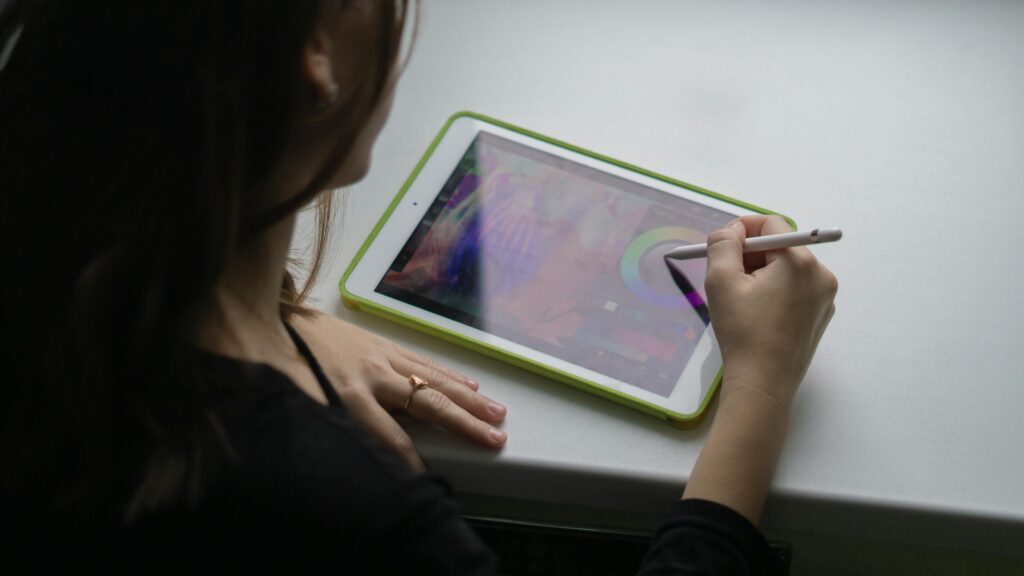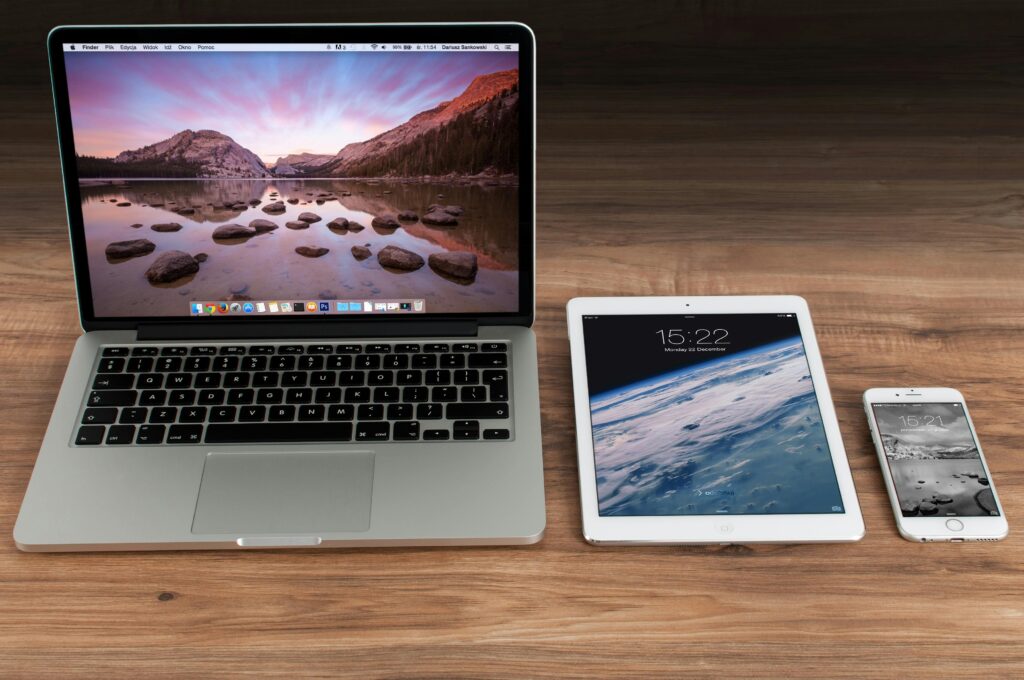Mobile Tablets The Phoenix of Personal Computing by Reviewtechs
Once hailed as the future of computing, mobile tablets have experienced a dramatic journey—from explosive growth to precipitous decline, and now to an unexpected renaissance. As we stand in mid-2025, tablets are quietly reclaiming relevance in a tech landscape dominated by smartphones and laptops. This article examines the historical trajectory, current resurgence, and future prospects of an device category that refuses to fade into obsolescence.
Mobile Tablets and their Golden Age and the Great Decline

The iPad Spark (2010-2015)
Apple’s 2010 iPad debut ignited a global tablet frenzy, creating a new category between smartphones and laptops. By 2014, shipments peaked at 230 million units as consumers embraced tablets for media consumption, gaming, and light browsing. The intuitive touch interface and portability made them ideal for casual use, with Android players like Samsung and Lenovo quickly entering the fray
The Perfect Storm of Decline (2016-2022)
Three factors catalyzed the tablet’s downfall:
- Smartphone Enlargement: Phablets (6″-7″ screens) eroded the tablet’s portability advantage.
- Hybrid PC Competition: Detachable keyboards transformed laptops into touch-enabled hybrids, offering full OS capabilities.
- Market Saturation: Tablets lacked compelling upgrade cycles, with users clinging to devices for 5+ years 612.
By 2022, shipments plummeted to 147 million—a 36% drop from peak levels. Industry analysts began penning the tablet’s obituary.
The 2025 Resurgence: Drivers and Dynamics
Market Rebound in Numbers
- Global shipments grew 8.5% YoY in Q1 2025, reaching 36.8 million units—the strongest growth in a decade 1.
- Apple dominates (37.3% share), but Chinese brands surge: Xiaomi shipments skyrocketed 56.1%, while Huawei and HONOR gained traction with ecosystem-driven value 1.
Key Growth Catalysts
- Refresh Cycles: Pandemic-era tablets (2020-2021) are hitting end-of-life, driving replacements. In the U.S., aging devices spurred consumer upgrades, while China’s Lunar New Year subsidies fueled double-digit growth 1.
- Productivity Pivot: Tablets evolved from consumption to creation:
- Apple Pencil Pro and Samsung S Pen enable design/note-taking.
- Desktop-class chips (Apple M4, Snapdragon 8 Gen 3) power multitasking.
- 30% of businesses now deploy tablets for field operations or POS systems 411.
- Sector-Specific Adoption:
- Education: Japan’s GIGA program and India’s digital initiatives drove institutional procurement.
- Healthcare: Telehealth and patient monitoring expanded tablet use

Table: Tablet Market Leaders in Q1 2025
| Vendor | Shipments (Millions) | Market Share | YoY Growth |
|---|---|---|---|
| Apple | 13.7 | 37.3% | 14.0% |
| Samsung | 6.6 | 18.0% | -5.2% |
| Xiaomi | 3.1 | 8.3% | 56.1% |
| Lenovo | 2.5 | 6.9% | 18.8% |
| Huawei | 2.4 | 6.5% | -12.5% |
The 2025 Landscape: Form Factors and Use Cases
Premium Powerhouses
- Apple iPad Pro (M4): Thinnest Apple product ever, with OLED displays and laptop-rivaling performance for creatives 25.
- Samsung Tab S10+: AI-enhanced multitasking, Dex desktop mode, and IP68 durability 11.
The “Pocket Rocket” Revolution
Compact 8-inch tablets are 2025’s surprise hit:
- Lenovo Legion Tab and Redmi G Pad pack flagship chips (Snapdragon 8 Elite) into 300g bodies.
- Use Cases: Mobile gaming (144Hz screens), on-the-go productivity, and e-reading 10.
Budget Segment Evolution
- Amazon Fire HD 10 ($140): Media consumption king with 13-hour battery.
- Samsung Tab A9+ ($240): Expands storage via microSD, appealing to students
The Future Trajectory: 2025–2030

Immediate Trends (2025–2027)
- AI Integration: Apple Intelligence and Samsung Galaxy AI enable predictive workflows, real-time translation, and context-aware apps 811.
- Foldable Displays: Samsung and Huawei plan foldable tablets for enhanced multitasking without bulk 6.
- Enterprise Expansion: 50% of B2B channel partners expect tablet sales growth, especially in retail (POS) and fieldwork 1.
Long-Term Shifts (2028–2030)
- 6G Connectivity: Ultra-low latency enables cloud-based processing and AR collaboration.
- Quantum Security: Blockchain-based encryption for healthcare and finance sectors 6.
- Sustainable Design: Modular components and recyclable materials address e-waste concerns
Table: The Tablet’s Tech Evolution
| Era | Key Technologies | Market Focus |
|---|---|---|
| 2010–2015 | Touchscreens, App Stores | Media Consumption |
| 2016–2022 | Keyboard Attachments | Hybrid Productivity |
| 2023–2025 | M4/8 Gen 3 Chips, 5G, AI | Creative Work |
| 2026–2030 | Foldables, 6G, Quantum Security | Sector-Specific Solutions |
Persistent Challenges
- Tech Obsolescence: Rapid AI advances could shorten lifecycles, pressuring consumers to upgrade frequently.
- Supply Chain Volatility: Chip shortages and tariff uncertainties (e.g., U.S. import fluctuations) disrupt production 112.
- OS Fragmentation: Android’s update delays contrast with Apple’s 7-year iPadOS support, affecting longevity 11.
- Market Saturation: Premium tablets face competition from ARM-based laptops like MacBook Air
The Niche-Focused Future
The tablet’s resurrection in 2025 signals not a return to dominance, but an evolution toward specialization. No longer a “one device for all,” it thrives in targeted niches:
- Creatives: Apple Pencil + OLED screens for designers.
- Vertical Industries: Rugged tablets for logistics, medical tablets for telehealth.
- Portability Seekers: 8-inch “pocket rockets” for gamers/commuters 10.
With AI integration and flexible displays poised to redefine utility, tablets will likely settle as indispensable adjuncts to smartphones and laptops—a resilient phoenix risen from the ashes, but now flying smarter. As Canalys analyst Himani Mukka notes: “Tablets aren’t replacing phones or laptops—they’re carving third way for situational computing that prioritizes adaptability over raw power”
(FAQs)
1. Why did tablet sales decline after 2015?
Answer: A “perfect storm” of factors caused the decline: phablet smartphones (e.g., 6–7″ screens) eroded portability advantages; 2-in-1 laptops offered full OS capabilities; and extended upgrade cycles (4+ years) reduced replacement demand 27. By 2022, global shipments fell 36% from their 2014 peak 1.
2. What’s driving the 2025 tablet resurgence?
Answer: Three key drivers:
- Refresh cycles: Pandemic-era tablets (2020–2021) are reaching end-of-life, spurring replacements.
- Productivity evolution: Desktop-class chips (Apple M4, Snapdragon 8 Gen 3), AI multitasking, and stylus tools (Apple Pencil Pro) enable serious creative work 14.
- Sector-specific adoption: Education (Japan’s GIGA program) and healthcare (telemedicine) now rely on tablets 17.
3. Are tablets replacing laptops in 2025?
Answer: Partially. High-end tablets like the iPad Pro (M4) and Samsung Tab S10 Ultra rival laptops for creative tasks, but resource-heavy workflows (e.g., 4K video editing) still favor traditional laptops. Windows hybrids like the Surface Pro 11 bridge the gap best 41113.
4. How is AI transforming tablets?
Answer: AI enables:
- Predictive workflows: Apple Intelligence/Samsung Galaxy AI adjust settings based on user habits.
- Creative tools: Real-time language translation, sketch-to-image generators (e.g., Galaxy Tab S10).
- On-device processing: NVIDIA-powered chips run complex models offline 41011.
5. Why do iPads dominate over Android tablets?
Answer: Key reasons include:
- App ecosystem: Robust, tablet-optimized apps (e.g., Procreate, LumaFusion).
- Chip dominance: M-series chips outpace Android rivals (e.g., Tensor G2).
- Longevity: 7+ years of OS updates vs. Android’s fragmentation 411.
Apple holds 57% of the U.S. market in 2025 11.
6. What niche roles do tablets fill today?
Answer: Tablets excel in specialized contexts:
- E-reading/note-taking: Amazon Kindle Scribe’s paper-like display 1.
- Field work: Ruggedized tablets for logistics/healthcare.
- Entertainment hubs: 8″ “pocket rockets” (e.g., Lenovo Legion Tab) for gaming 14.
7. Are foldable tablets the future?
Answer: Yes. Samsung and Huawei are launching foldable tablets in 2025–2027, offering expansive screens when unfolded and phone-like portability when folded. This addresses the “bulk vs. functionality” trade-off 110.
8. How sustainable are modern tablets?
Answer: Brands now prioritize:
- Recycled materials: Aluminum bodies, bioplastic components.
- AI power management: Self-tuning batteries to extend lifespan.
- Refurbished markets: Companies like Wisetek reduce e-waste 110.
9. Can tablets compete with smartphones for daily use?
Answer: Not as primary devices, but as complements. Tablets outperform phones for media consumption, digital art, and document work, but lack the always-on portability of smartphones 79.
10. What’s the biggest challenge for tablets beyond 2025?
Answer: Avoiding re-saturation. Manufacturers must justify upgrades with transformative features (e.g., quantum-cloud computing, AR interfaces) rather than incremental specs
Key Insight:
Tablets have shifted from “jacks-of-all-trades” to purpose-driven tools. Their future hinges on deepening niche value—whether as an artist’s canvas, medic’s clipboard, or gamer’s portable console

